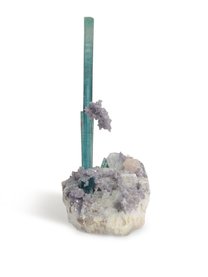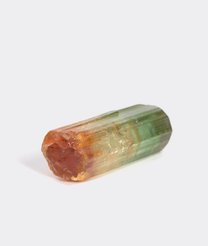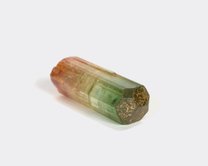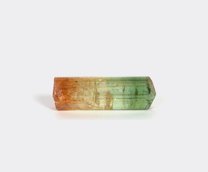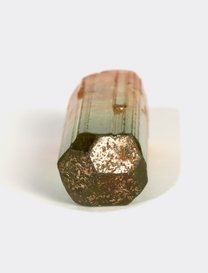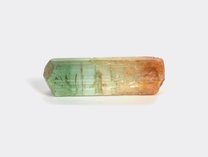Tourmaline
- Undated
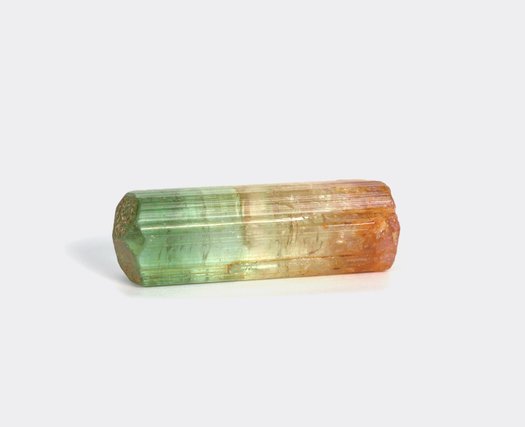
Rights
 BY 4.0
BY 4.0Download all 6 images
PDFZIPof full-sized JPGsDownload selected image
Small JPG1200 x 976px — 60.7 KBLarge JPG2880 x 2342px — 233 KBFull-sized JPG7055 x 5737px — 1.1 MBOriginal fileTIFF — 7055 x 5737px — 10.2 MB
 This work is licensed under a Creative Commons Attribution 4.0 International License.
This work is licensed under a Creative Commons Attribution 4.0 International License.Tourmaline is a semi-precious stone that can be found in a variety of colors based on the presence of iron, magnesium, or lithium. This tri-colored tourmaline is a result of impurity atoms that were incorporated while the crystal was forming.
Tourmaline's chemical structure is complex, but is generally written as X(Y,Z)₃Z₆(BO₃)₃(Si₆O₁₈)(OH)₄.
| Property | Value |
|---|---|
| Place of creation | |
| Format | |
| Genre | |
| Extent |
|
| Subject | |
| Rights | Creative Commons Attribution 4.0 International License |
| Rights holder |
|
| Credit line |
|
Institutional location
| Department | |
|---|---|
| Exhibited in |
Related Items
Cite as
Science History Institute. Tourmaline. Photograph, 2025. Science History Institute. Philadelphia. https://digital.sciencehistory.org/works/c3g90dw.
This citation is automatically generated and may contain errors.



